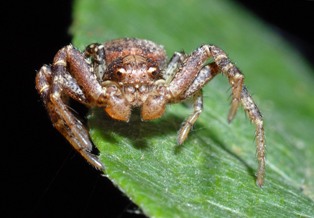- Series:Animals, Transcript English
Job 8:13-14
“So are the paths of all that forget God; and the hypocrite’s hope shall perish: Whose hope shall be cut off, and whose trust shall be a spider’s web.”
A family reunion among spiders is not a pretty thing. Many of the some 35,000 species of spiders begin eating their siblings as soon as they hatch. For this reason, spiders are typically lone hunters. Evolutionists have always explained that spiders evolved this way because it works best for them.
 But a few species of spiders are social. They live together in large communities, caring for each other’s young and working together to get food. Their social structure is not like that of bees or ants; but, as one researcher put it, spider society is more like a herd of wildebeests. A South American social spider lives in multi generational colonies that can have hundreds of thousands of members. Australia’s crab spider is also social, building a nest of eucalyptus leaves. The colonial orb weaving spider of Mexico and the U.S. Southwest builds huge colonies out of individual orb webs. The largest colony web ever found was 12 feet deep, six feet high and 600 feet long. It contained hundreds of thousands of members!
But a few species of spiders are social. They live together in large communities, caring for each other’s young and working together to get food. Their social structure is not like that of bees or ants; but, as one researcher put it, spider society is more like a herd of wildebeests. A South American social spider lives in multi generational colonies that can have hundreds of thousands of members. Australia’s crab spider is also social, building a nest of eucalyptus leaves. The colonial orb weaving spider of Mexico and the U.S. Southwest builds huge colonies out of individual orb webs. The largest colony web ever found was 12 feet deep, six feet high and 600 feet long. It contained hundreds of thousands of members!
Evolutionary scientists have been struggling not just with an explanation for how social spiders evolved, but how it happened independently among eight unrelated families of spiders. But the answer should be obvious. The same Creator Who made the wildebeest a herd animal also made social spiders the same way. He did it so we might recognize His existence and then learn of His love for us in sending His Son to be our Savior.
Prayer:
We praise You, Father, for the amazing creativity with which You have signed Your creation so we might seek You. Amen.
Notes:
Laura Helmuth, “Spider Solidarity Forever,” Science News, May 8, 1999, v. 155, p. 300. Photo: Crab spider. Courtesy of André Karwath. Licensed under the Creative Commons Attribution-Share Alike 2.5 Generic license.
